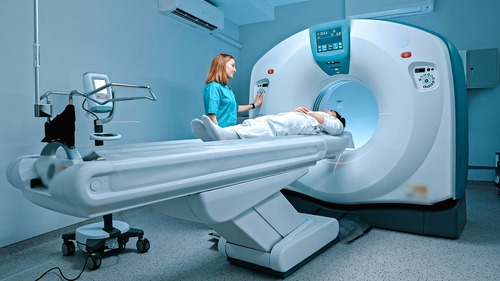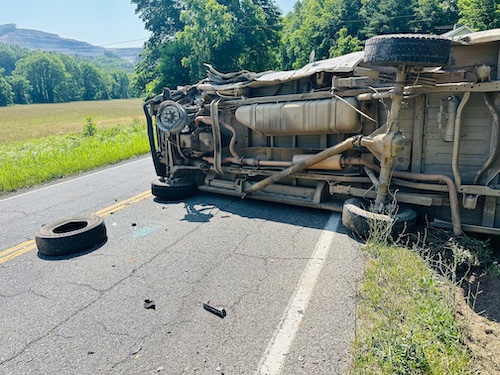At Atlanta Metro Law, we are dedicated to helping individuals who have been injured in car accidents get the justice and compensation they deserve. With years of experience, we guide our clients through the legal process, ensuring they receive the medical care and financial support needed for recovery. Our team is committed to providing personalized, compassionate representation, and we’re here to support you every step of the way
After a car accident, choosing between an MRI or CT scan after a car accident is crucial. Two of the most common imaging techniques used are CT scans (Computed Tomography) and MRI scans (Magnetic Resonance Imaging). Both provide detailed images of the body but are suited to different types of injuries.
In this blog, we’ll break down the key differences between CT and MRI scans, helping you understand which imaging method might be best for your injuries after a car accident, and how working with an experienced Atlanta car accident attorney can ensure you receive the medical care and compensation you deserve.
What is a CT Scan and How Does it Work?
A CT scan, or computed tomography scan, is a medical imaging technique used to create detailed images of the inside of your body. It provides information that helps doctors diagnose injuries or conditions, especially after accidents like car crashes.
CT Scan Basics
A CT scan combines x-rays and computer technology to capture cross-sectional images of the body. Unlike traditional x-rays, a CT scan takes multiple x-ray images from different angles, which a computer then combines to create a 3D image.
How CT Scans Capture Images
A CT machine uses a rotating x-ray beam to scan your body. As the scanner rotates, it captures a series of cross-sectional images or “slices” of the body. These images are combined to provide a detailed view of your internal organs, bones, and soft tissues.
What a CT Scan Can Detect
CT scans are especially effective in identifying bone fractures, internal bleeding, brain injuries, and head trauma. The detailed CT images can also show pulmonary embolism, lung tissue issues, or spinal cord injuries, making it a critical tool in emergency care.
Radiation Exposure in CT Scans
CT scans use ionizing radiation to create detailed cross-sectional images. While the radiation levels are higher than standard x-rays, the images produced are much clearer and more detailed. Doctors use this method when they need high-resolution images to quickly diagnose serious injuries.
Benefits of CT Scans
The speed and effectiveness of a CT scan make it a valuable tool in emergency situations. It provides detailed images in just a few minutes, allowing doctors to make fast decisions in critical situations. Whether it’s detecting internal bleeding or assessing bone fractures, CT scans give doctors a comprehensive look inside the body.
What is an MRI and How Does it Work?
An MRI, or Magnetic Resonance Imaging, is a non-invasive imaging technique that provides detailed pictures of the inside of the body, especially for soft tissues. It is often used to assess injuries to muscles, tendons, and organs.
MRI Basics
An MRI scan uses a powerful magnetic field and radio waves to create detailed images of the body’s internal structures. Unlike CT scans, MRI does not involve ionizing radiation, making it a safer option for some patients.
How MRI Scans Capture Images
The MRI machine generates a strong magnetic field that aligns the protons in your body. The machine then sends out radio waves, which knock the protons out of alignment. As the protons return to their original position, they emit signals, which the MRI system detects to create detailed cross-sectional images of the body’s soft tissues.
What an MRI Can Detect
MRI scans are highly effective at imaging soft tissues such as the brain, spinal cord, muscles, and internal organs. They can also show blood vessels, detect tumors, or identify damage to the spinal cord and nerves after a car accident.
No Radiation in MRI Scans
One of the key advantages of an MRI is that it does not use ionizing radiation, unlike CT scans or x-rays. This makes MRI a safer option for patients who may need repeated scans, such as those with a history of multiple sclerosis or cancer.
Benefits of MRI
An MRI provides highly detailed images of soft tissues that are difficult to see with other imaging methods. It is especially useful for detecting conditions in areas like the brain, spinal cord, and blood flow, making it invaluable in diagnosing injuries or conditions following a car accident.
Key Differences Between MRI and CT Scan After a Car Accident
MRI and CT scans are both essential tools for diagnosing injuries after a car accident, but each is suited for different types of injuries and provides unique benefits. Understanding their differences can help determine which scan is best for your condition.
Imaging Focus: Soft Tissue vs. Bone
MRI scans are superior for imaging soft tissues like muscles, tendons, spinal cord, and organs. They provide detailed images of blood vessels and internal organs, making them ideal for assessing injuries such as torn ligaments or nerve damage. On the other hand, CT scans excel at detecting bone fractures and internal bleeding, especially in emergency situations where rapid results are necessary.
Radiation Exposure: MRI vs. CT
A major difference between the two scans is radiation exposure. CT scans use ionizing radiation to create images, which can be a concern, especially with repeated scans. MRI scans, however, do not use radiation and rely on magnetic fields and radio waves to generate images, making them a safer choice for patients who require frequent imaging or have specific health concerns.
Speed and Efficiency
CT scans are faster than MRI scans, typically completing in just a few minutes. This makes them an excellent choice for emergency situations where rapid decision-making is crucial. In contrast, MRI scans take longer, often requiring up to 30 minutes, and may not be ideal in situations where time is critical.
Detail of Images
MRI provides detailed cross-sectional images of soft tissues, which is helpful for diagnosing injuries to the spinal cord, brain, and organs. CT scans, while also offering high-resolution cross-sectional images, are better at visualizing bone structures and lung tissue, and can detect pulmonary embolism or brain injuries.
Choosing the Right Scan for Your Injury
When deciding between an MRI and CT scan, the type of injury plays a significant role. If a head trauma or bone fractures are suspected, a CT scan is likely the better option due to its speed and ability to capture bone damage. However, if the injury involves soft tissue, blood flow, or nerve damage, an MRI scan will offer more precise images for diagnosis.
Special Considerations After a Car Accident
After a car accident, certain factors can influence the choice between an MRI or CT scan. These considerations include the type of injury, patient history, and potential risks associated with each imaging technique.
Head Trauma and Brain Injuries
When head trauma occurs in a car accident, both CT scans and MRI scans may be used, but for different purposes. CT scans are often the first choice for detecting brain injuries, brain tumors, and internal bleeding due to their speed and ability to visualize bone fractures and brain tissue. MRI scans, however, provide better detail for assessing brain injuries, particularly soft tissue damage, and are often used in follow-up examinations for more in-depth analysis.
Spinal Injuries
For spinal injuries, both CT scans and MRI scans have distinct advantages. CT scans can quickly identify spinal fractures or internal bleeding, especially in emergency situations. MRI scans, on the other hand, are better for evaluating soft tissue injuries to the spinal cord, including nerve damage, and for visualizing the surrounding blood vessels and soft tissues that may be affected.
Concerns for Pregnant Women
MRI scans are generally considered safe for pregnant women as they do not involve ionizing radiation. However, CT scans should be avoided during pregnancy, especially in the early stages, due to the potential risks associated with radiation exposure. If a CT scan is necessary, healthcare providers will carefully weigh the risks and benefits.
Patients with Metallic Implants
Patients with metallic implants or artificial joints should exercise caution when undergoing an MRI scan. The strong magnetic field used in MRI can interfere with metal implants, causing discomfort or even harm. CT scans, which do not use a magnetic field, are a safer option for these patients, allowing doctors to obtain detailed cross-sectional images without risking complications.
Medical History and Risk Factors
Patients with a history of multiple sclerosis, lung cancer, or other serious conditions may require special consideration when deciding between a CT scan and an MRI scan. For example, if a patient has a history of cancer, an MRI scan may be preferred to avoid the radiation exposure associated with CT scans. Healthcare providers will consider the patient’s medical history to determine the most appropriate imaging method for their specific needs.
Consult With an Experienced Atlanta Car Accident Lawyer ASAP!
If you’ve been in a car accident and are unsure about whether to get an MRI or CT scan, or if you’re seeking compensation for your injuries, our team at Atlanta Metro Law is here to help. We understand the complexities of car accident cases and the importance of receiving the right medical treatment. Our experienced attorneys can guide you through the process, ensure you get the care you need, and fight for the compensation you deserve.
Contact us at 864-894-2045 for a free case consultation today!





